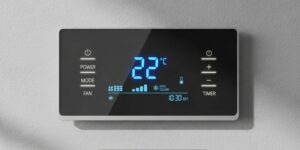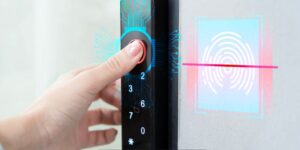Circuit breakers serve as essential components in modern electrical systems, acting as safety devices designed to protect both the wiring and the appliances within a home or commercial building. They function by interrupting the flow of electricity when an overload or short circuit occurs, thereby preventing potential hazards such as electrical fires or equipment damage. Each circuit breaker is rated for a specific amperage, which determines how much current it can handle before tripping.
This rating is crucial, as it ensures that the breaker will respond appropriately to excessive electrical loads. In essence, circuit breakers are the guardians of electrical systems. They are typically housed in a breaker panel, which is often located in a basement, garage, or utility room.
When a circuit breaker trips, it can be reset manually, allowing the flow of electricity to resume once the underlying issue has been addressed. Understanding how these devices operate is fundamental for homeowners and business owners alike, as it empowers them to manage their electrical systems more effectively and safely.
Key Takeaways
- Circuit breakers are designed to protect electrical circuits from damage caused by overloads or short circuits.
- Common causes of tripped breakers include overloaded circuits, short circuits, and ground faults.
- Troubleshooting steps for resetting tripped breakers include identifying the tripped breaker, turning it off and then on, and checking for any signs of damage.
- Preventive measures to avoid tripped breakers include avoiding overloading circuits, using surge protectors, and regularly inspecting electrical systems.
- It is important to call a professional electrician if you are unsure about how to troubleshoot or reset tripped breakers, or if you experience frequent tripped breakers.
Identifying Common Causes of Tripped Breakers
Tripped breakers can be a source of frustration for many individuals, often occurring without warning and disrupting daily activities. One of the most common causes of a tripped breaker is an overloaded circuit. This situation arises when too many devices are connected to a single circuit, drawing more current than the breaker can handle.
For instance, plugging multiple high-wattage appliances into the same outlet can easily exceed the circuit’s capacity, leading to a trip. Recognizing this pattern can help individuals distribute their electrical load more evenly across different circuits. Another frequent culprit behind tripped breakers is a short circuit, which occurs when a hot wire comes into contact with a neutral wire or another conductive surface.
This creates a sudden surge of electricity that the circuit breaker cannot accommodate, resulting in an immediate trip. Short circuits can be caused by damaged wiring, faulty appliances, or even moisture intrusion in electrical connections. Identifying these issues early on is crucial for maintaining a safe electrical environment and preventing further complications.
Troubleshooting Steps for Resetting Tripped Breakers

When faced with a tripped breaker, individuals can take several troubleshooting steps to address the issue effectively. The first step is to locate the breaker panel and identify which breaker has tripped. This is typically indicated by a switch that has moved to the “off” position or is in a neutral position between “on” and “off.” Once the tripped breaker is identified, it is essential to turn off any devices connected to that circuit before attempting to reset it.
This precaution helps prevent further overloads or complications during the reset process. After ensuring that all devices are turned off, the individual can proceed to reset the breaker by flipping the switch back to the “on” position. If the breaker trips again immediately after being reset, it indicates that there is an underlying issue that needs to be addressed.
In such cases, it is advisable to investigate potential causes such as overloaded circuits or faulty appliances. If troubleshooting does not resolve the problem, seeking professional assistance may be necessary to ensure safety and compliance with electrical codes.
Preventive Measures to Avoid Tripped Breakers
| Preventive Measures | Impact |
|---|---|
| Regular maintenance of electrical systems | Reduces risk of overloading and short circuits |
| Proper labeling of circuits | Facilitates identification and troubleshooting |
| Installing surge protectors | Protects against power surges and fluctuations |
| Using energy-efficient appliances | Reduces strain on electrical systems |
Preventing tripped breakers requires proactive measures that focus on proper electrical management and maintenance. One effective strategy is to conduct regular inspections of electrical systems and appliances. Homeowners should check for signs of wear and tear on cords and outlets, as well as ensure that appliances are functioning correctly without any unusual sounds or smells.
Additionally, keeping track of the total wattage used on each circuit can help prevent overloads by allowing individuals to redistribute their electrical load more effectively. Another preventive measure involves upgrading older wiring systems that may not be equipped to handle modern electrical demands. Many older homes have outdated wiring that can lead to frequent tripping of breakers due to insufficient capacity.
By consulting with an electrician about potential upgrades or replacements, homeowners can enhance their electrical systems’ reliability and safety. Furthermore, installing dedicated circuits for high-wattage appliances can significantly reduce the risk of overloading existing circuits.
When to Call a Professional Electrician
While many minor issues related to tripped breakers can be resolved through basic troubleshooting, there are instances when calling a professional electrician becomes necessary. If a breaker continues to trip after being reset multiple times, it may indicate a more serious problem within the electrical system that requires expert evaluation. Electricians possess the knowledge and tools needed to diagnose complex issues such as faulty wiring, overloaded circuits, or malfunctioning appliances.
Additionally, if individuals notice any signs of electrical hazards—such as flickering lights, burning smells, or scorch marks around outlets—it is crucial to seek professional help immediately. These symptoms may indicate underlying problems that could pose significant safety risks if left unaddressed. A qualified electrician can conduct thorough inspections and implement necessary repairs or upgrades to ensure that the electrical system operates safely and efficiently.
Upgrading Your Electrical System to Prevent Tripped Breakers

Upgrading Circuit Breakers for Improved Performance and Safety
One common upgrade involves replacing outdated circuit breakers with modern ones that offer improved performance and safety features. Newer breakers often come equipped with technology designed to detect faults more accurately and respond more quickly than older models.
Rewiring for Enhanced Safety and Functionality
In addition to upgrading breakers, individuals may also consider rewiring their homes if they have older wiring systems that do not meet current safety standards. This process involves replacing outdated materials with modern wiring that can handle higher loads and reduce the risk of overheating or short circuits.
Distributing Electrical Loads More Evenly
Furthermore, installing additional circuits dedicated to high-demand appliances can help distribute electrical loads more evenly throughout the home, significantly reducing the likelihood of tripped breakers.
Safety Tips for Dealing with Tripped Breakers
Safety should always be a priority when dealing with tripped breakers and electrical systems in general. Individuals should never attempt to reset a breaker while standing in water or in damp conditions, as this poses a serious risk of electric shock. It is also essential to wear rubber-soled shoes and avoid touching metal surfaces when working near electrical panels.
Moreover, individuals should familiarize themselves with their breaker panel layout and labeling system. Knowing which circuits correspond to specific areas of the home can streamline troubleshooting efforts and enhance safety during resets. In addition, keeping a fire extinguisher rated for electrical fires nearby can provide peace of mind in case of emergencies related to electrical issues.
Maintaining a Safe and Functional Electrical System
Maintaining a safe and functional electrical system is crucial for any homeowner or business owner. Understanding the basics of circuit breakers, identifying common causes of trips, and implementing preventive measures can significantly reduce the risk of electrical hazards. Regular inspections and timely upgrades ensure that systems remain compliant with safety standards while accommodating modern demands.
When faced with persistent issues related to tripped breakers, seeking professional assistance is vital for addressing underlying problems effectively. By prioritizing safety and staying informed about best practices in electrical management, individuals can create a secure environment that minimizes disruptions while maximizing efficiency in their daily lives. Ultimately, investing time and resources into maintaining an electrical system pays dividends in safety and peace of mind for all who rely on it.
If you’re experiencing frequent tripped breakers in your home, it may be time to consider upgrading your electrical system. According to a comprehensive guide on how to choose the right ice fishing line from Candybird, understanding the importance of selecting the correct materials and components for a specific task is crucial for optimal performance. Just like choosing the right fishing line for ice fishing, selecting the appropriate electrical components for your home can prevent issues like tripped breakers and ensure a safe and efficient system.
FAQs
What causes frequent tripped breakers?
Frequent tripped breakers can be caused by overloading the circuit, a short circuit, or a ground fault. Overloading occurs when too many devices are plugged into a single circuit, while a short circuit occurs when a hot wire comes into contact with a neutral wire. A ground fault occurs when a hot wire comes into contact with a ground wire or a metal box.
How can I prevent frequent tripped breakers?
To prevent frequent tripped breakers, avoid overloading circuits by spreading out the use of electrical devices across different circuits. Additionally, ensure that all electrical wiring is properly installed and maintained to prevent short circuits and ground faults.
When should I call a professional for frequent tripped breakers?
If you are experiencing frequent tripped breakers despite taking preventive measures, it is advisable to call a professional electrician. They can inspect the electrical system, identify any underlying issues, and make necessary repairs to ensure the safety and functionality of the electrical system.






